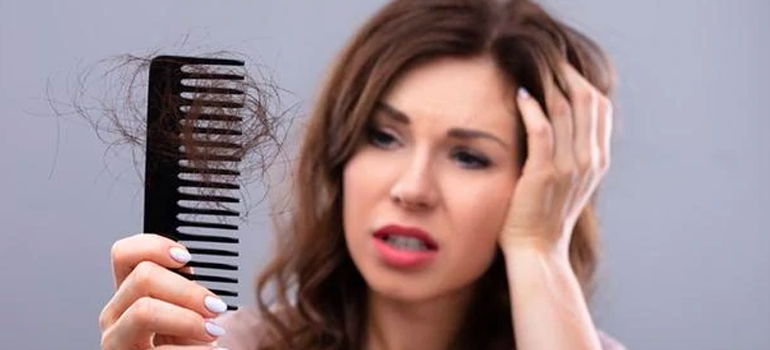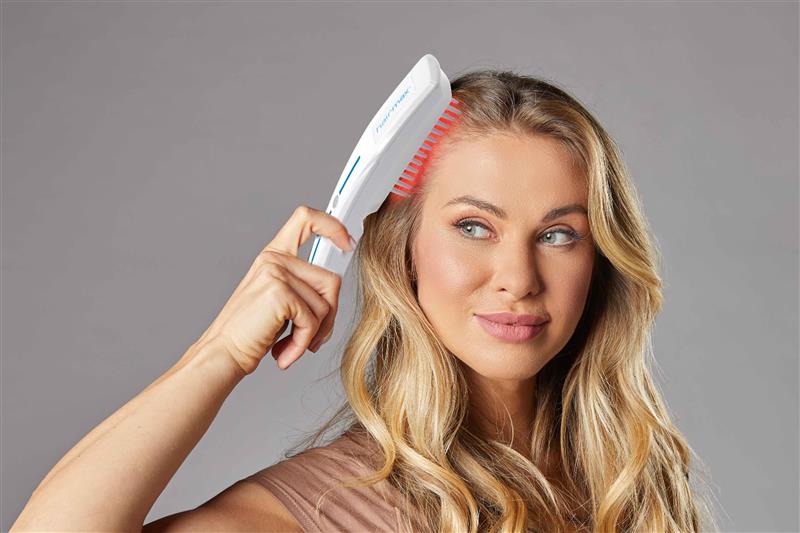For many women, the appearance and health of their hair impact how they feel about themselves. Dealing with a change in the thickness or the health of their hair can harm their self-esteem. Unfortunately, hair loss in women is quite common and impacts millions of people across the globe. We've created the following guide to help you understand this situation and learn how to combat hair loss in women so that you can address hair loss and maintain your self-confidence.
What Is Hair Loss in Women?
Hair loss in women is extra frightening when it comes suddenly and unexpectedly. It's important to understand that males and females shed between 50 and 100 hairs per day. Shedding the hair is part of the natural hair growth cycle since the scalp needs room for the new hairs that grow into the scalp. This loss of hair differs from everyday shedding. Hair loss is also called alopecia in the medical community.
Nearly all skin surfaces grow hair, except for the eyelids, palms of the hands, soles of the feet, and lips. Thicker, longer, and darker hair is called androgenic or terminal hair, while short, fine hair is called vellus hair. The hair on your head is terminal or androgenic. The scalp includes hundreds of thousands of hair follicles. When in the anagen or growing phase, the hair can grow and push through the scalp, becoming visible. Up to 90% of the hair on your head remains in the anagen phase at any given time. This phase lasts between two and eight years.
The other two cycles of hair growth are the catagen and telogen phases. In the catagen phase, the hair follicles shrink and transition. The telogen (resting) phase allows hair to fall out, and this phase lasts for about two to four months.
Types of Hair Loss in Women
Women who are dealing with hair loss experience one of three types. These types of hair loss are:
- Telogen effluvium: This type of hair loss occurs when the number of hair follicles in the telogen phases increases, causing hair to fall out more rapidly.
- Anagen effluvium: This type of hair loss occurs when a woman takes medications that harm the growing hair follicles, such as chemotherapy drugs.
- Androgenetic alopecia: Also known as female pattern hair loss (FPHL), female pattern baldness, or female pattern alopecia, this type of hair loss occurs when the hair thins on the sides and top of the head. It's the most common hair loss type, affecting up to 30 million women in America.
Female Versus Male Hair Loss
Men also deal with hair loss, and many people mistakenly believe that hair loss only impacts men. However, millions of women experience hair loss for various reasons. Females can deal with this problem at any stage of life. Those who are more susceptible to female hair loss include:
- Postpartum women.
- Women older than age 40.
- Women who use harsh chemicals on their hair.
- Menopausal women.
- Women who have undergone chemotherapy.
- Women who frequently wear tight hairstyles that pull on the hair (such as tight braids or ponytails).
- Women who have taken other medications that impact hair growth.
Heavy heat use on the hair may also impact the health of the follicles, which can result in increased hair loss.
Misconceptions About Hair Loss in Women
Although known causes for female hair loss exist, many myths can cause people to feel confused or change their habits. Some people mistakenly believe that hair loss occurs when you wash it too frequently, but frequent washing is generally not the case. Specific shampoo and conditioning products can boost hair growth and reverse hair loss. For example, the HairMax line of Density hair products includes proprietary ingredients that transform hair by appearance, resulting in healthier-looking hair. Options include Density STIMUL8 Shampoo, ACCELER8 Hair Booster + Nutrients, and RSN8 Pro Scalp Infusion.
Other myths you may have heard about hair loss and prevention include:
- Dandruff causes hair loss.
- Hair loss impacts particularly smart or intellectual women.
- Standing on the head increases circulation and boosts hair growth.
- Brushing the hair 100 strokes a day improves its health.
- Wigs and hats cause hair loss.
- Shaving the head causes the hair to grow back in doubly thick.
Causes of Hair Loss in Women

As mentioned, women can experience hair loss when they take certain medications that impact the health and progression of the hair follicles. Other causes of hair loss include:
- Vitamin deficiency.
- Hairstyle choices.
- Rapid weight loss, often caused by restrictive diets.
- Overly processed hair on the scalp contribute to breakage.
- Extreme physical shock or stress to the body.
- Thyroid problems or abnormality.
- Hormonal changes.
- Extreme emotional stress.
- Aging.
- Genetic factors.
When a woman has a baby, her body goes through physical and hormonal changes. Both of these experiences can result in hair loss. Postpartum hair loss is quite common and can last for up to a year. Most new moms find that their hair growth and thickness have returned to their pre-pregnancy state by their child's first birthday.
Women who have alopecia areata, an autoimmune skin disease that can lead to hair loss. It's generally not a permanent condition but can cause patch hair loss on the head and other body parts. Many cases occur before women reach the age of 30 and develop suddenly over only a few days. The most common treatment for this disease is anti-inflammatory drugs known as corticosteroids that suppress the body's immune system.
Dealing with hair loss can be frustrating for any woman, but no one has to face it alone. We believe that using effective hair regrowth and thickening agents can make a big difference in the appearance and health of hair in women struggling with hair loss for any reason.











